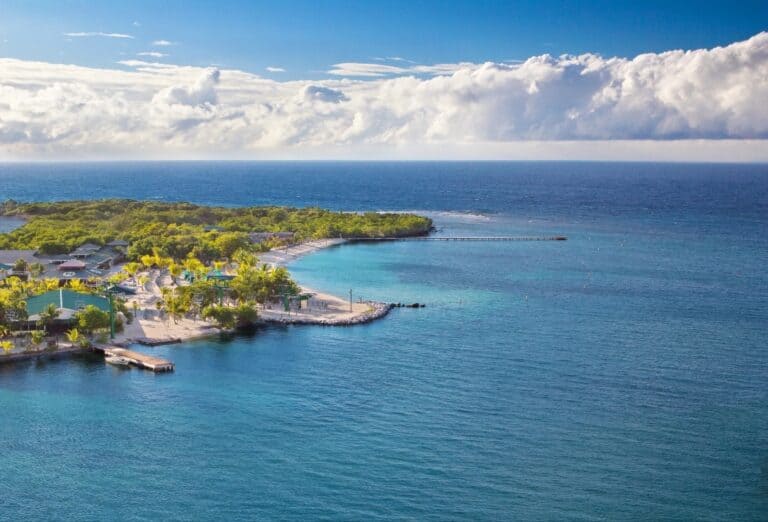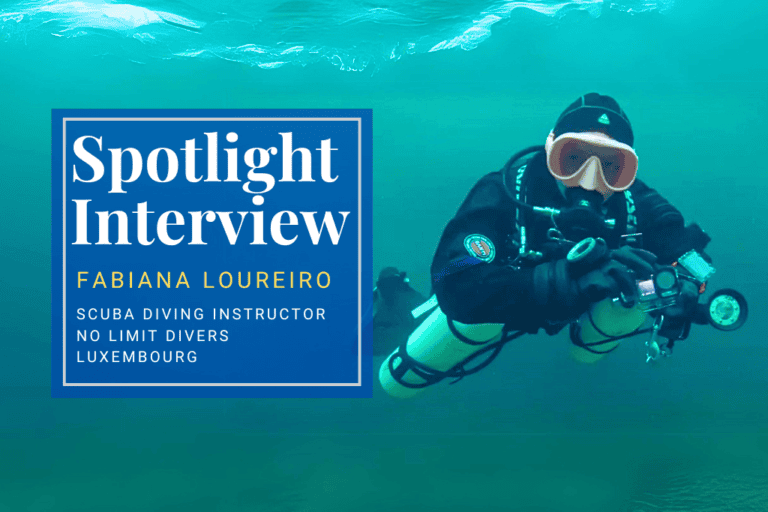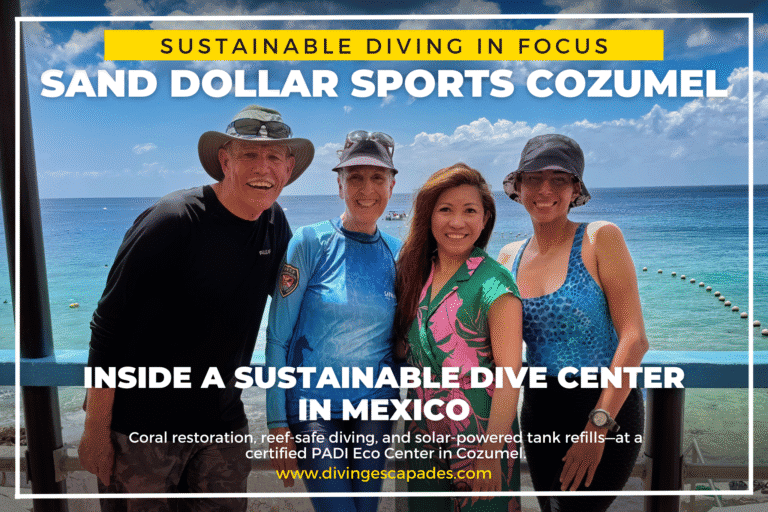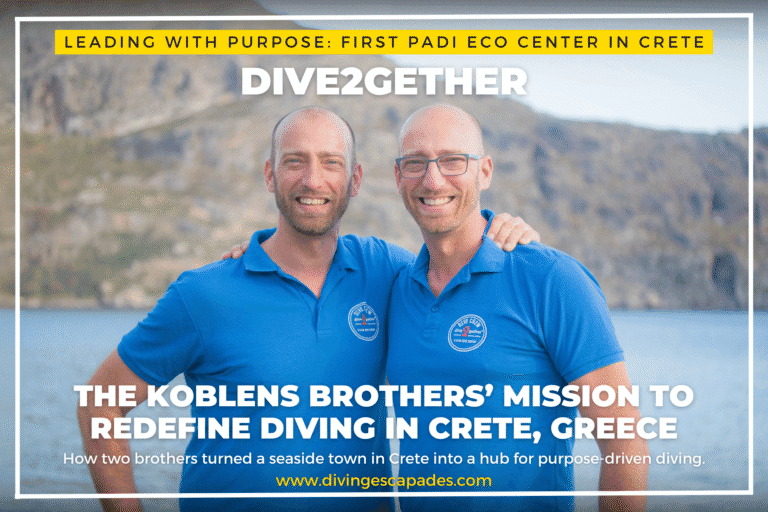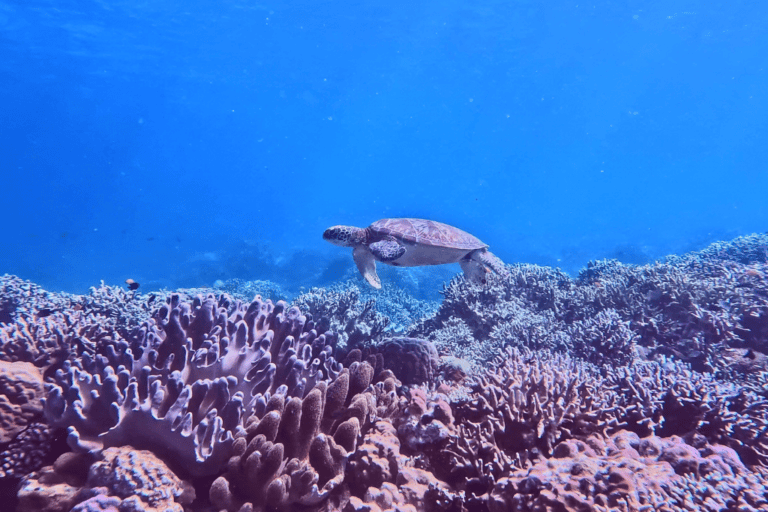Scuba Diving in Lanzarote: Tips and What You Need To Know
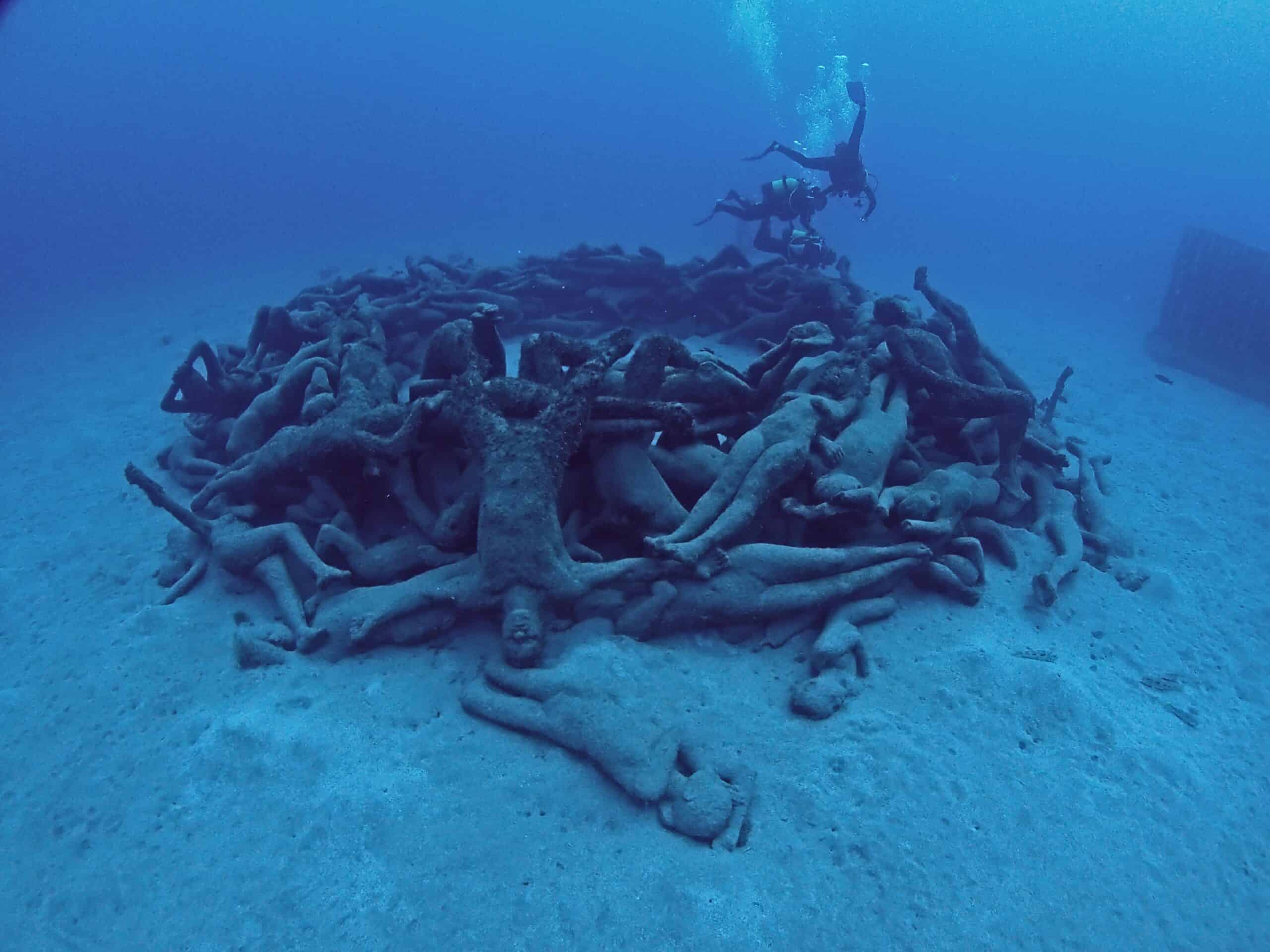

Thinking of scuba diving in Lanzarote in the Canary Islands?
You’re in for something a little different.
When I visited, I spent a week on the island and managed three days of diving—exploring calm house reefs and an underwater museum you won’t find anywhere else in Europe.
In this guide, I’ll walk you through the dive sites you should check out, the dive center I recommend, and a few practical tips to help you plan your own trip.
Plan Your Trip with My Favorite Resources
🏨 Find your stay: Booking.com – trusted for hotels, studios, and apartments in Lanzarote
🚗 Need wheels? Discover Cars – best deals for exploring Lanzarote by car
🎟️ Book top-rated tours: GetYourGuide – easy, flexible, and full of local gems, from volcano tours to island day trips
Lanzarote Diving Overview
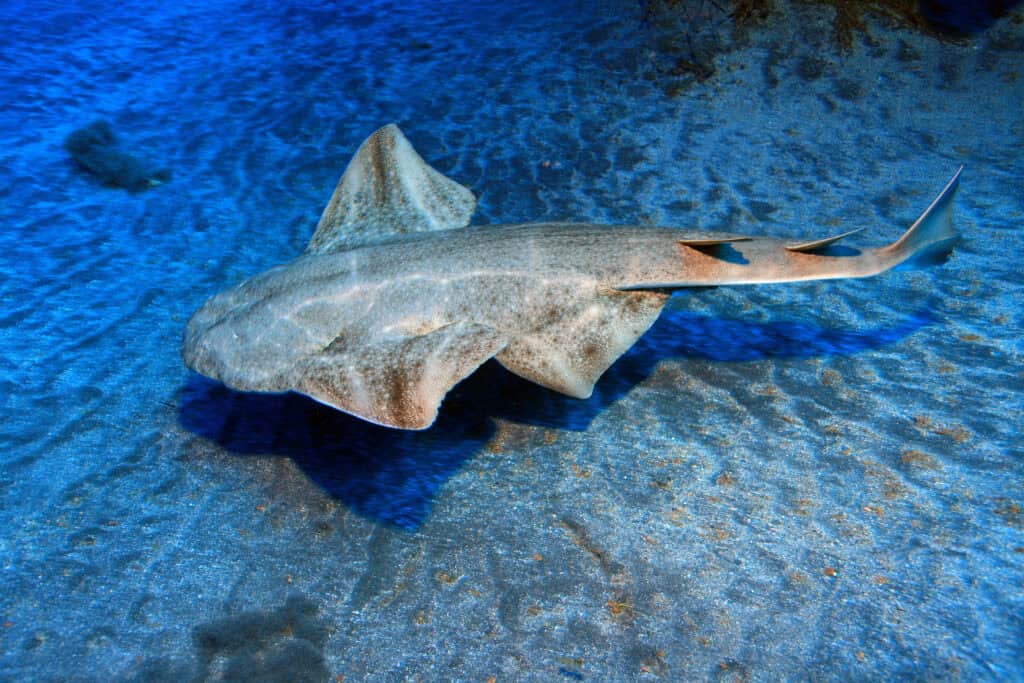
Diving in Lanzarote has a different vibe compared to most places in Europe.
Thanks to the Canary Islands’ location, the water stays pretty mild year-round—cooler in winter, warmer in summer, and usually crystal clear with visibility around 20 to 30 meters.
The island has something for every type of diver. If you’re new, the calm house reefs are perfect for courses and practice dives.
If you’re more advanced, there are volcanic walls, swim throughs, caverns, and deeper sites that push your limits a little more.
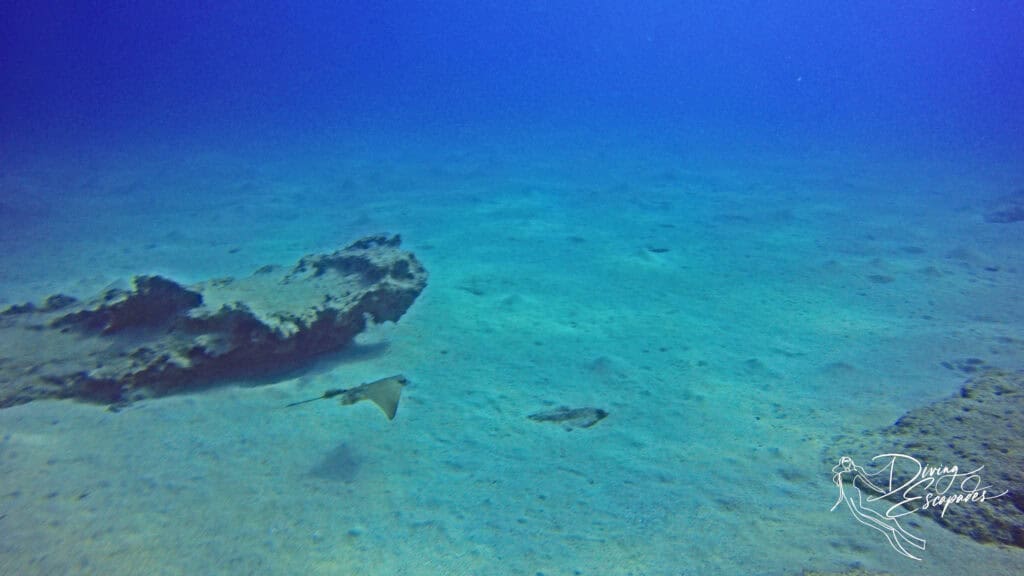
On any dive, you might be lucky enough to spot angel sharks, one of Lanzarote’s most fascinating and sought-after marine species. These critically endangered sharks often rest on sandy seabeds, blending in perfectly with their surroundings.
Alongside them, you can also encounter butterfly rays, barracudas, groupers, moray eels, octopus, and plenty of colorful reef fish darting around the lava rocks.
And then there’s the Museo Atlántico. It’s Europe’s first underwater art museum (and the only one in the Atlantic Ocean), and honestly, one of the most memorable dives I’ve ever done.
Where else can you float around statues standing on the seabed, slowly turning into coral-covered reefs?
If you’re curious to see what diving in Lanzarote actually looks like, I filmed some of my dives while I was there. Here’s a glimpse of the underwater scene, including the Museo Atlántico and those volcanic seabeds bubbling with life:
Recommended Dive Center
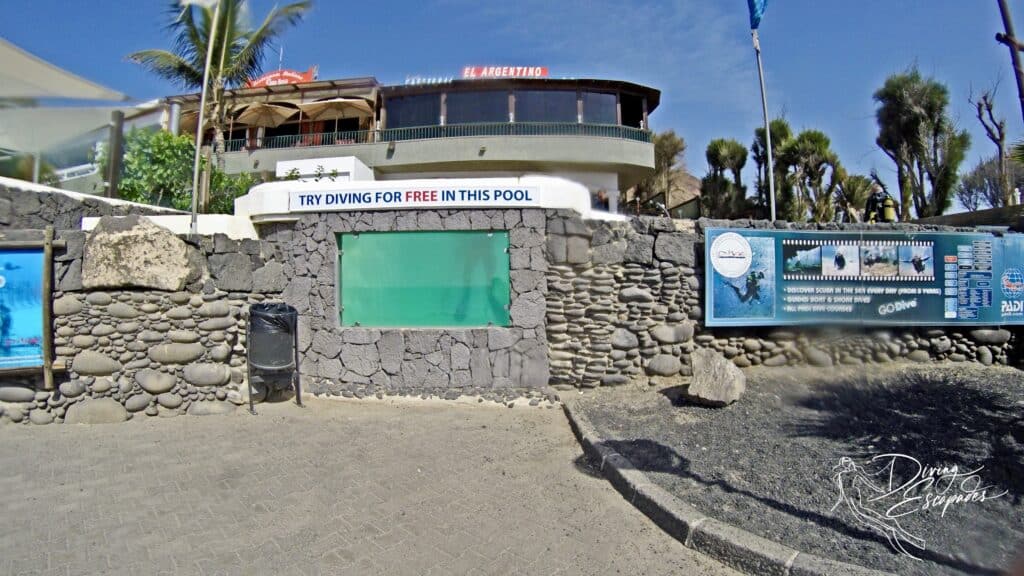
I went with Dive College Lanzarote, and I’d happily recommend them to you. They’re based right in Playa Blanca, so it was easy for me to walk in, chat with the crew, and head out for a dive.
The team was professional and really friendly—safety-focused but also fun to be around. They run everything from intro dives and PADI courses to guided dives at all the big sites, including Museo Atlántico.
I did my PADI underwater photography specialty course with them, and the way they explained things made it a great learning experience.
If you’re looking for a dive center that’s approachable, organized, and knows the local sites inside out, these are your people.
Best Diving Sites in Lanzarote
Here’s a quick look at some of the dive spots you’ll want to add to your list.
1. Museo Atlántico
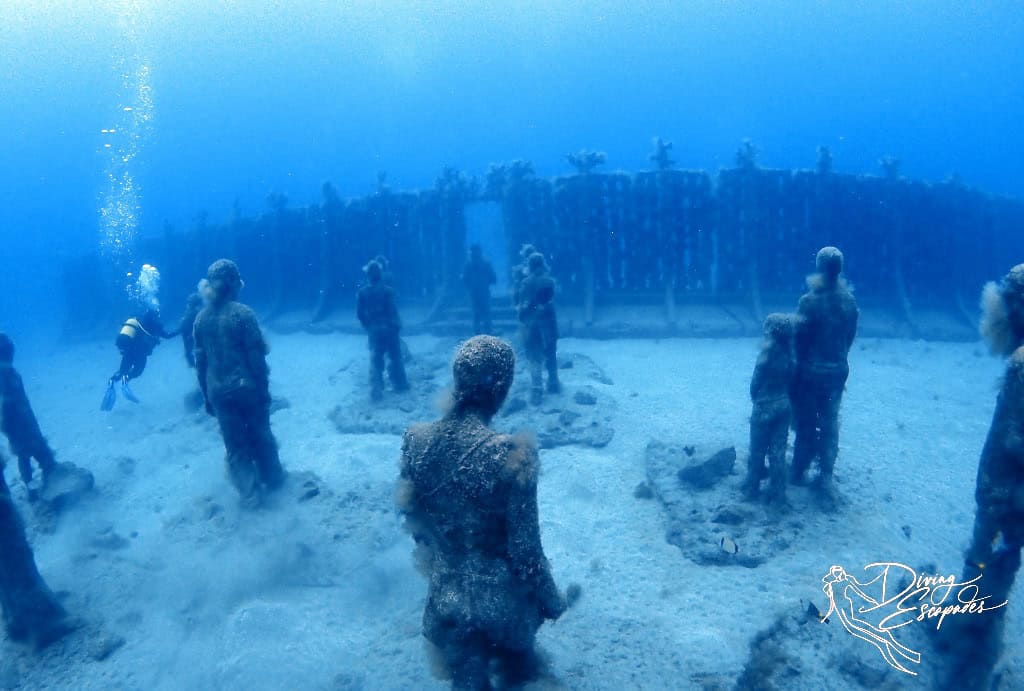
This is the dive site that Lanzarote is famous for. The sculptures sit at 12–15 meters, making it accessible even if you’re a new diver.
As you swim past, you’ll notice schools of fish darting between the figures, rays cruising along the sandy bottom, and the way the statues are slowly becoming part of the reef.
If you’re into underwater photography (or even just GoPro shots), this is a dream site. It’s calm, shallow, and has that “wow” factor you don’t find anywhere else in Europe.
2. Las Coloradas
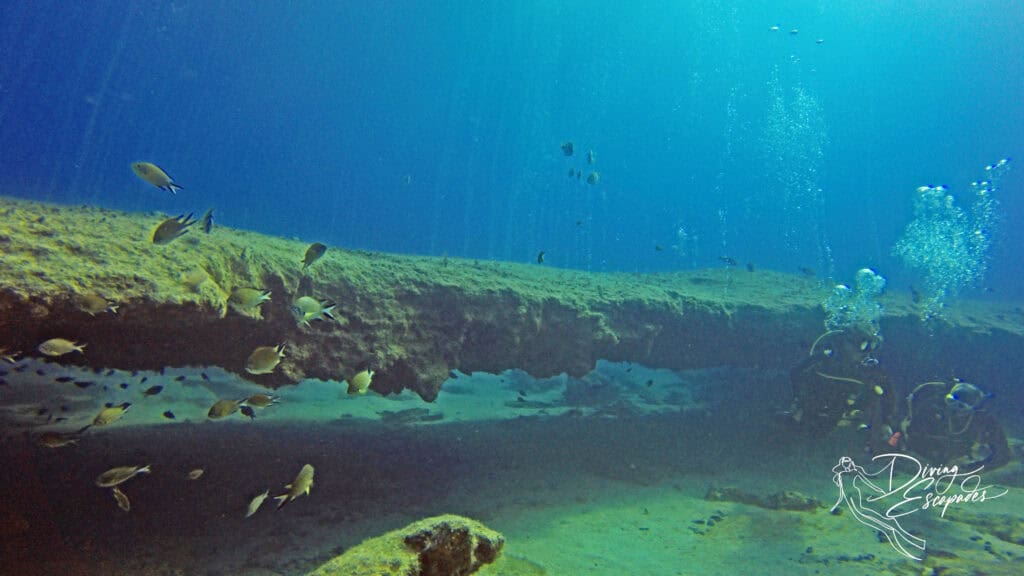
Just off Playa Blanca, Las Coloradas is one of my favorite dives in Lanzarote. The volcanic formations here are incredible—rugged lava rocks, cracks, and little swim-throughs.
On my dive, I spotted a butterfly ray, a peacock flounder, and a school of barracudas passing by.
It’s a bit deeper than Museo Atlántico, so I’d say it’s better for divers with a little more experience, but it’s definitely worth doing.
3. House Reef (Dive College Lanzarote)
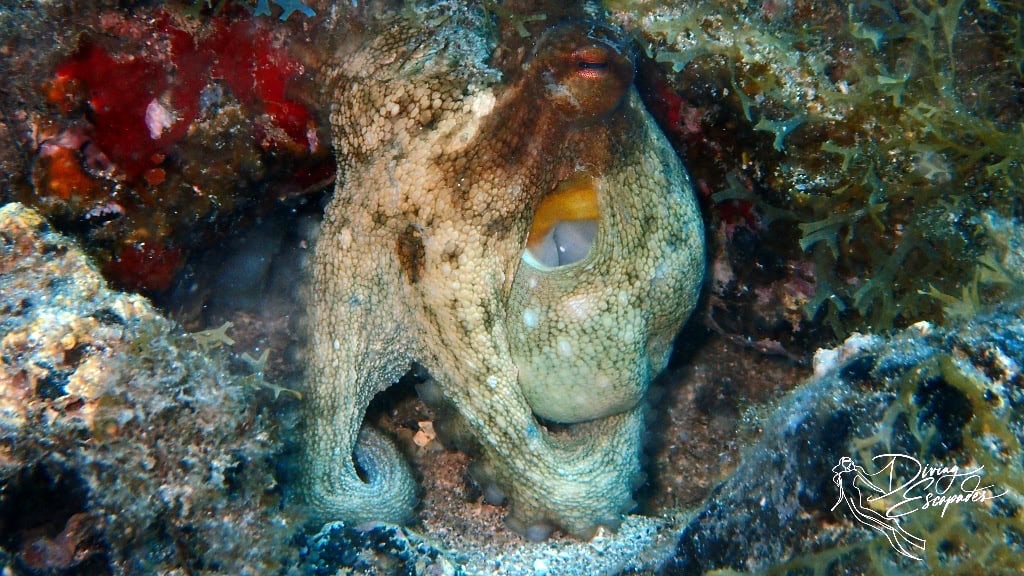
Don’t underestimate this one. It’s the perfect training ground.
The conditions are calm, the depth is manageable, and yet it’s full of life—bream, parrotfish, damselfish, and even the occasional octopus if you know where to look.
If you’re just starting out or doing a course, this is the ideal place to begin. Even as a more experienced diver, it’s a relaxing dive that lets you slow down and really enjoy the little details.
4. The Cathedral (La Catedral)
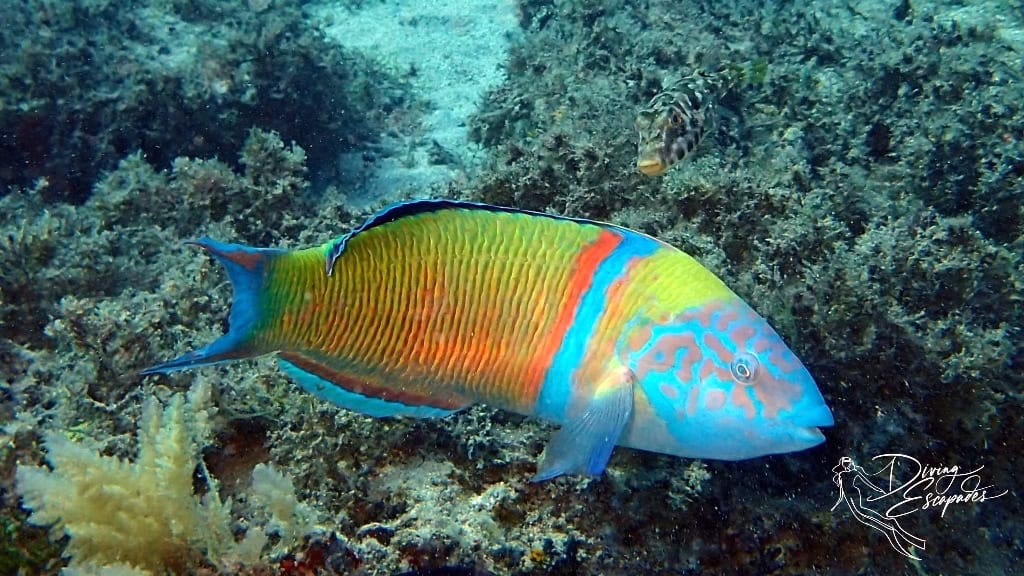
This dive site is located off Puerto del Carmen, not Playa Blanca, so if you’re staying in that area you should definitely make time to check it out. It’s one of Lanzarote’s signature dives and for good reason.
Imagine a giant volcanic cavern opening up in front of you—it feels dramatic, almost like stepping into an underwater church.
Inside, you’ll often spot large groupers, moray eels, and sometimes nudibranchs crawling along the rocks.
It’s deep—around 30 meters—so this one’s best if you’re an advanced diver or have your Deep Diver certification. But if you’re qualified, it’s absolutely worth adding to your dive log.
Best Time to Dive in Lanzarote
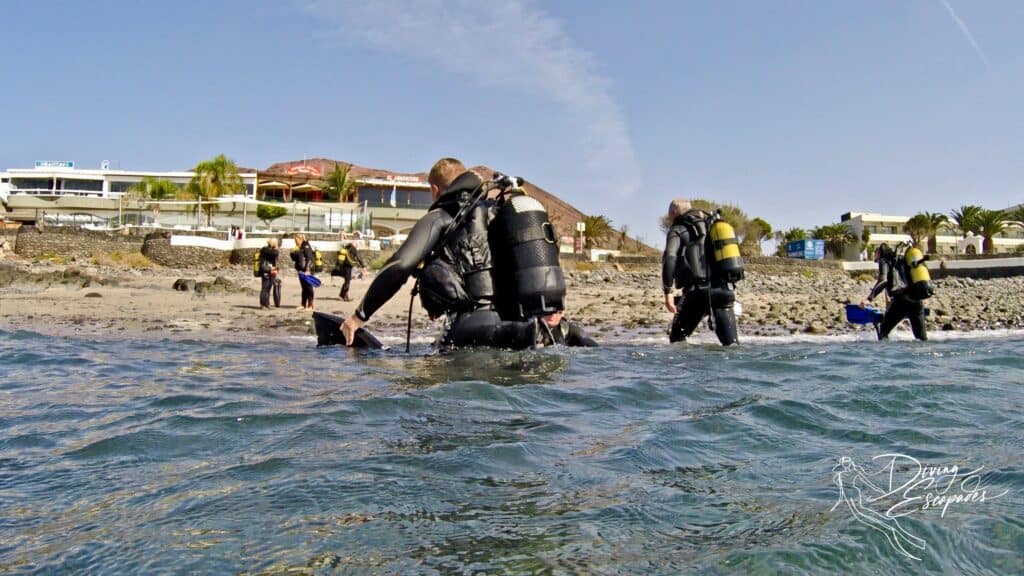
The good news? You can dive in Lanzarote pretty much all year round.
👉 Summer (June–September): Warm water (22–24°C) and calm seas. Perfect if you want to combine diving with a beach holiday.
👉 Winter (December–March): Cooler water (17–19°C) but great visibility. You may spot the rare angelsharks during this season.
👉 Spring & Autumn: My personal pick—pleasant conditions, fewer tourists, and still plenty of marine life. I went in October, and it was ideal.
Where to Stay
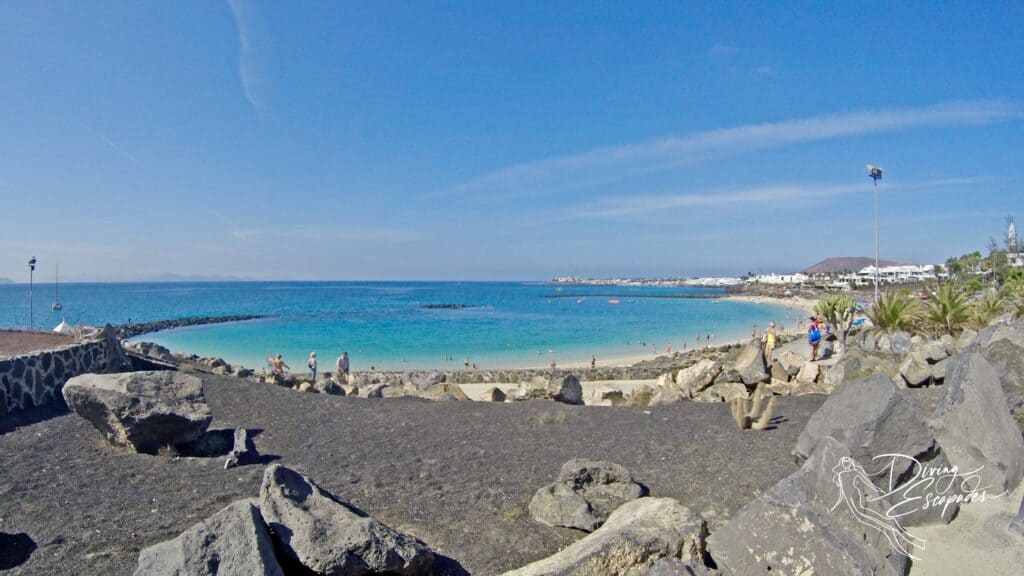
If you’re diving a lot, Playa Blanca is a great base, especially for Museo Atlántico. Puerto del Carmen is also popular, with easy access to sites like The Cathedral.
Here are my picks for Playa Blanca:
📍 Budget Option: Apartamento Arena – A simple, affordable base if you’re mainly there to dive. Just a 5-minute walk from the town center, beach, restaurants, and shops.
👉 Check prices & availability on Booking.com
📍 Mid-Range Option: Apartments Vista Marítima by Villas Now Ltd – Directly on the beach with stunning sea views. A great location without the feel of a massive resort.
👉 Check prices & availability on Booking.com
📍 Luxury Option: Princesa Yaiza Suite Hotel Resort – Gorgeous, right on the beach, perfect if you want to mix diving with some luxury downtime.
👉 Check prices & availability on Booking.com
How to Get There
Flying is the easiest option. Lanzarote Airport (ACE) in Arrecife is well connected to most major European cities. From the airport, it’s about a 30-minute drive to Playa Blanca.
I recommend renting a car—it’s affordable and makes exploring the island outside of diving much easier. If you’d rather not drive, taxis and shuttles are available, but you’ll have less flexibility.
If you’re island-hopping, there are ferries connecting Lanzarote with Fuerteventura and Gran Canaria.
Need a rental car in Lanzarote? I recommend booking through Discover Cars for the best rates and easy pick-up at the airport.
Frequently Asked Questions

Got questions about scuba diving in Lanzarote? Here are some quick answers to help you out.
Is Lanzarote good for scuba diving?
Yes! Lanzarote offers a mix you won’t find elsewhere in Europe—volcanic reefs, lava tubes, caverns, and the famous Museo Atlántico.
Visibility is usually 20–30 meters, and the island’s mild climate means you can dive year-round.
It’s great for beginners (thanks to calm house reefs) and still exciting for advanced divers with deeper walls and caverns.
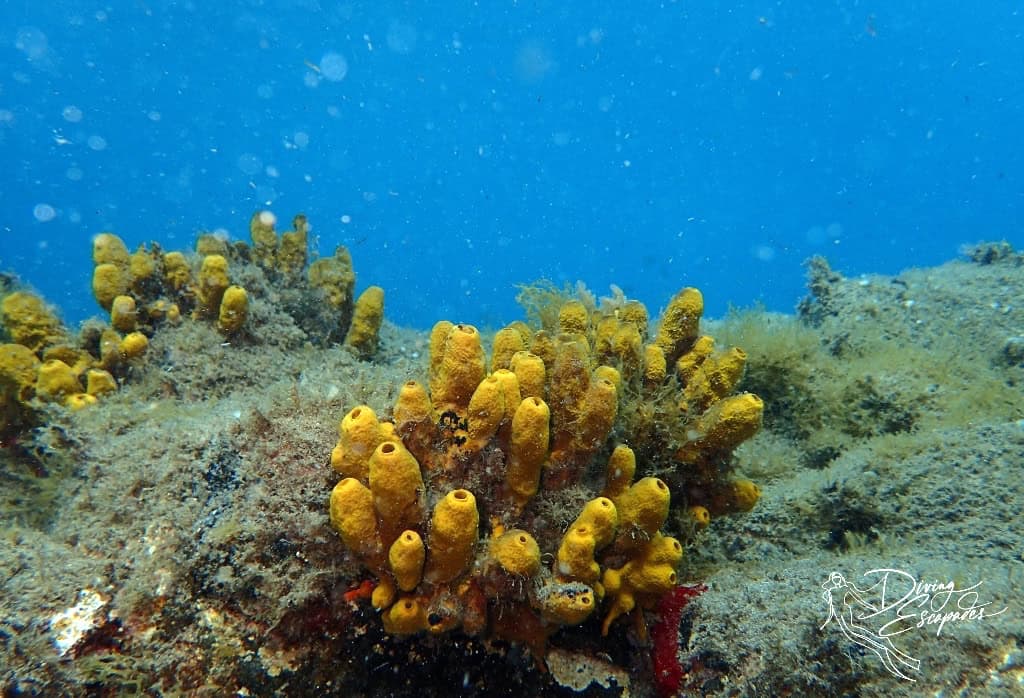
How much is scuba diving in Lanzarote?
A typical fun dive costs around €40–50, while a two-dive package is often a better deal at around €70–90.
Museo Atlántico dives usually cost a bit more because of permits and logistics. If you’re planning multiple dives, most dive centers offer discounted packages, so it’s worth asking ahead.
Is Lanzarote safe?
Yes. Lanzarote is a popular holiday island with a well-regulated dive industry. Dive centers are professional, safety standards are high, and emergency facilities are available if needed.
On land, it’s also one of the safest Canary Islands for travelers.
What marine species can be seen in Lanzarote?
You’ll likely spot butterfly rays, rare angelsharks (in winter), barracudas, groupers, moray eels, octopus, and plenty of smaller reef fish.
Lanzarote is also home to colorful nudibranchs, and if you’re lucky, you might catch a glimpse of dolphins passing by on a boat ride out to the sites.
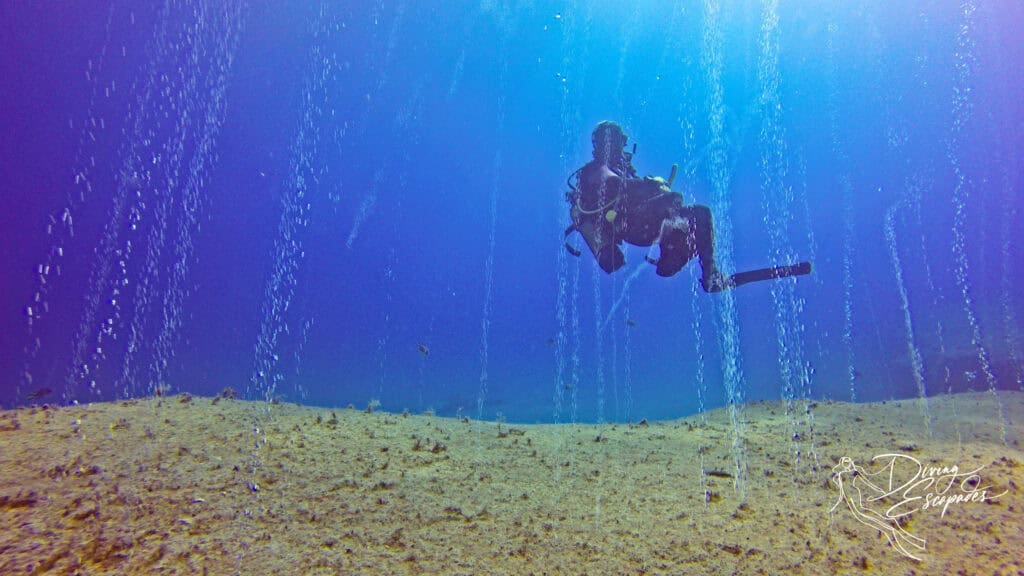
The Wrap Up: Scuba Diving in Lanzarote
Lanzarote isn’t just about sun loungers and sangria—it’s one of those places where the diving actually steals the show.
The best part? Beginners will find calm, easy conditions to build confidence, while experienced divers can explore lava formations and head deeper into sites like The Cathedral.
So if you’re planning a trip to the Canary Islands, save a few days for scuba diving in Lanzarote. Your dive log (and your inner adventurer) will thank you. Safe travels!
Keep Exploring Diving in Europe
If you’re planning more dive trips in Europe, here are a few guides I’ve written based on my own experiences:
🌊 Ultimate Guide to Diving in Elba Island: What to Expect in Marina di Campo
🤿 Diving in Crete: Ultimate Guide to Southern Sites
🌅 Diving in Santa Teresa di Gallura, Sardinia: Ultimate Guide
Each one dives into different landscapes, marine life, and local tips to help you plan your next underwater adventure.

